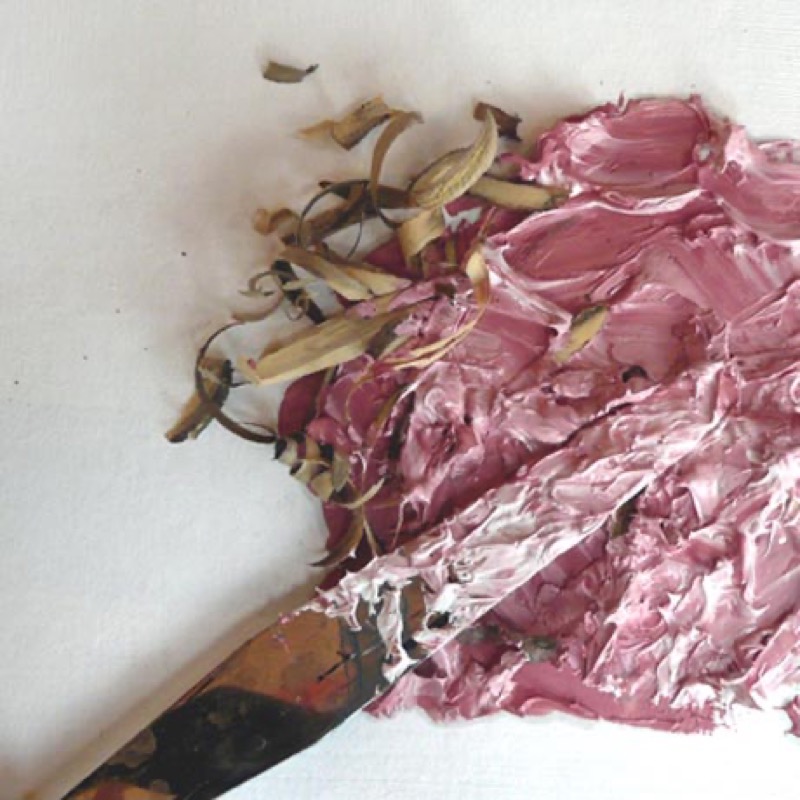You can add all kinds of materials (sand, wood shavings, sawdust) to your colors to thicken the texture, leave imprints, etc. Handle your work like a three dimensional object!
What you need to know
Because oil is a strong binding agent, you can add all kinds of fillers to oil paint. However, you need to use a rigid enough support (canvas mounted on a frame, wood panel) to withstand the weight of those layers of paint!

1. Different additives
Use a palette knife to work with paint and additive mixtures. That little extra: ask a do-it-yourself store for a sample tile (more or less 40 by 40 cm)… you can use it as a palette!
- Sand: it adds shimmer and a delicately granular texture when mixed with paint.
- Sawdust: an outstanding thickener that allows you to apply very thick impastos. Once the layer has hardened, work it into any shape that strikes your fancy: turn yourself from a painter into a sculptor!
- Wood shavings: this is the most delicate additive you can work with. Because it adds very significant relief to paint, use it only on a few limited areas of your work. This will produce effects that contrast with other, lighter textured paints.

2. Imprints
Apply a thick layer of oil paint and take advantage of its slow drying time to add imprints to the paint.
You can use any object: what's most important is for it to leave raised traces!
Note!
Before getting started, do some tests to measure the thickness of the paint you’ll need, along with how and how much you'll need to press down on the object to produce the intended effect.
Recommended product:
Figueras®
See also :
Oil painting
Oil: Glaze painting
